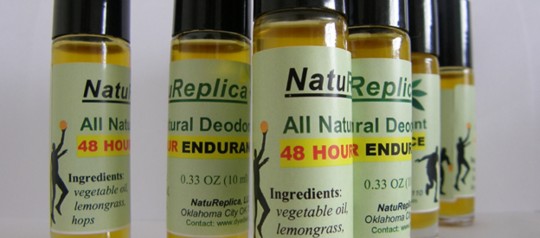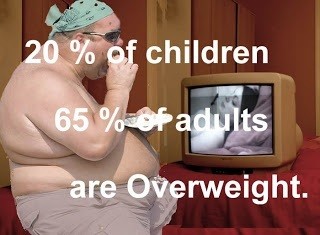Quick Guide to Buying Easter Eggs and Bunnies
They put artificial colors into American food year-round. But it is on holidays when the population, children in particular, consume extraordinary high amounts of artificial food dyes from all possible sources: sodas, candies, cookies, pies, cakes, etc. This Easter season is no exception: Easter Bad Surprise Lollipops, Would Jesus enjoy eating the food dyes? Be ready for a spike of allergies, asthma, ADHD and… yes, cancer symptoms. Surprisingly to me, despite all the available information that has become broadly known for the last decade, many American moms still have no knowledge of potentially health and life-destructive effects that consumption of artificially colored food may cause to their kids. In the attempt to help alleviating existing health conditions and preventing new ones from triggering, let me share my today’s quick observations made in Easter treats isle at a local Walmart.
Isn’t this vilely to charge cute Easter eggs and bunnies with evil chemicals?
We all know that all children love brightly colored toys and foods. But isn’t this grossly immoral, for us, the adult people pretending to believe in God, to exploit children’s perception and monetize on children’s trustfulness while feeding them with cheap hostile chemicals like 2-(6-Hydroxy-2,4,5,7-tetraiodo-3-oxo-xanthen-9-yl)benzoic acid (Red 3 a cancer suspect) or trisodium-5-oxo-1-(4-sulfonatophenyl)-4-[(4-sulfonatophenyl)hydrazono]-3-pyrazolecarboxylate (Yellow 5 causes behavioral changes in children), especially as the Easter treats? Easter is about LOVE and there is only meanness and hatred lurked in that treats. One day your children will give it back to you in the form of uncontrolled anger caused by ADHD, other psychiatric disorders or unexplained school shootings and suicides. Shame on you, adults! Read: Food Dyes: A Rainbow of Risks
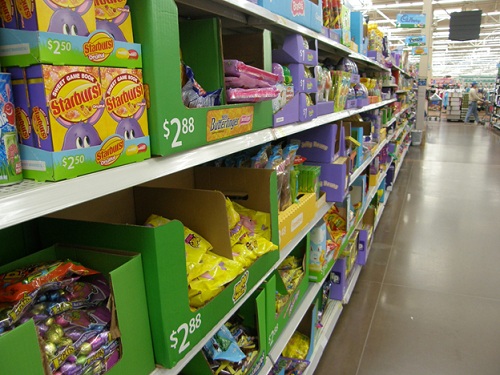 Artificial colors of Easter: Starburst, Skittles, Lifesavers
Artificial colors of Easter: Starburst, Skittles, Lifesavers
The Dye Diet Calculator shows risks, not toxicity
The Dye diet Calculator works based on the lists of ingredients and doesn’t take into account actual amounts of potentially toxic food additives. The reason is clear: those values can only be measured by physical analytical methods (see for instance How Much Dyes Do We Drink?) Here you go, below I report the results of some Easter candy measurements for you.
Easter Candies: Health Risks and Dye Contents
Jumbo Gumballs
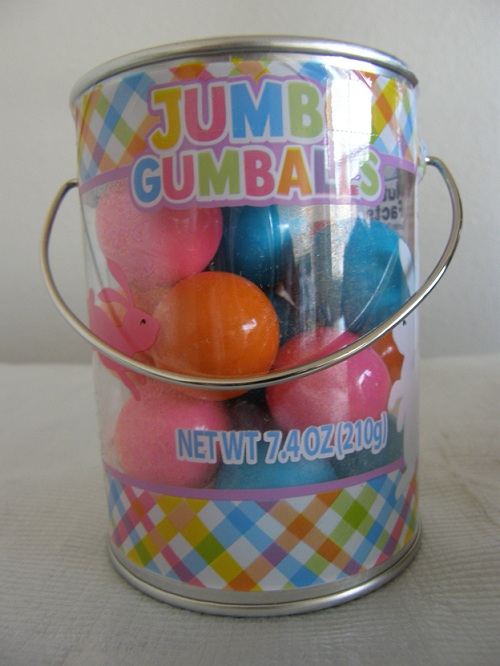 This garbage from China distributed by Galerie (Kentucky) is made of sugar, gum base, five artificial colors: titanium dioxide, Yellow 5, Yellow 6, red 3 and Blue 1 topped with butylated hydroxytoluene (BHT) preservative, linked to child hyperactivity and cancer. Enjoy, if you want! But reserve a space in closest emergency room too.
This garbage from China distributed by Galerie (Kentucky) is made of sugar, gum base, five artificial colors: titanium dioxide, Yellow 5, Yellow 6, red 3 and Blue 1 topped with butylated hydroxytoluene (BHT) preservative, linked to child hyperactivity and cancer. Enjoy, if you want! But reserve a space in closest emergency room too.
The Dye Diet Calculator shows unacceptably high health risk = 6.6 and zero nutritional value = 0.1. See the calculator for more details.
Dyes content per 210 g container, mg
|
Red 3 |
Yellow 6 |
Blue 1 |
Total |
|
7 |
4 |
2 |
13 |
The only reason that you may be lucky is that gumballs are often dyed only on the surface. This is why the dye content is low. But it is plenty titanium dioxide inside the balls.
Please remember, that gum base normally is not swallowed and it is indigestible. So basically, sugar and artificial colorants are all that goes into your child’s blood.
Dubble Bubble Eggs
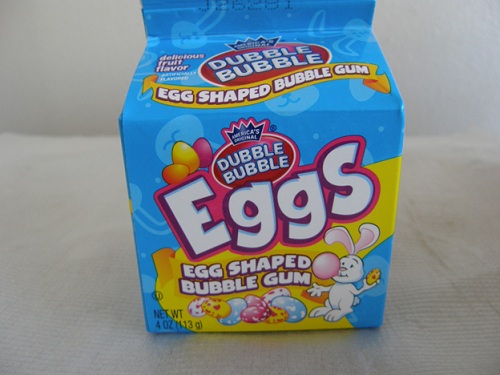 It is another bubble gum crap, but this time from Canada by a division of Tootsie. It is made from “domestic and imported ingredients,” possibly from the same company in China as the above one because the ingredients are essentially the same.
It is another bubble gum crap, but this time from Canada by a division of Tootsie. It is made from “domestic and imported ingredients,” possibly from the same company in China as the above one because the ingredients are essentially the same.
The Dye Diet Calculator shows very high health risk = 3.5 and almost zero nutritional value = 0.2. See the calculator page for more details.
Dyes content per 113 g container, mg
|
Red 3 |
Blue 1 |
Total |
|
2 |
1 |
3 |
Although this container is smaller and your child gets smaller overall amounts of dyes, their concentration per 1 g is about the same.
Peeps Marshmallow Chicks (pink)
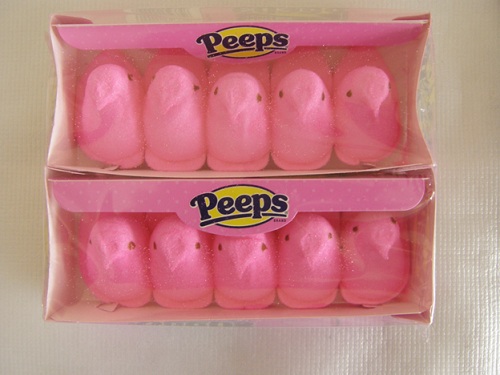 With marshmallow, along with the colorants you child gets gelatin instead of gum base as in gumballs. Yes, it is a little better but keep in mind that gelatin is the least nutritious protein mix produced by partial hydrolysis of collagen extracted from the skin, boiled crushed horn, hoof and bones, connective tissues, organs and some intestines of animals such as domesticated cattle, chicken, fish, and horses.
With marshmallow, along with the colorants you child gets gelatin instead of gum base as in gumballs. Yes, it is a little better but keep in mind that gelatin is the least nutritious protein mix produced by partial hydrolysis of collagen extracted from the skin, boiled crushed horn, hoof and bones, connective tissues, organs and some intestines of animals such as domesticated cattle, chicken, fish, and horses.
The Dye Diet Calculator shows high health risk = 2 and almost zero nutritional value = 0.25. Visit the calculator page for more information.
Dye content per two tray 85 g container, mg
|
Red 3 |
|
3 |
Lifesavers Gummies Bunnies and Eggs
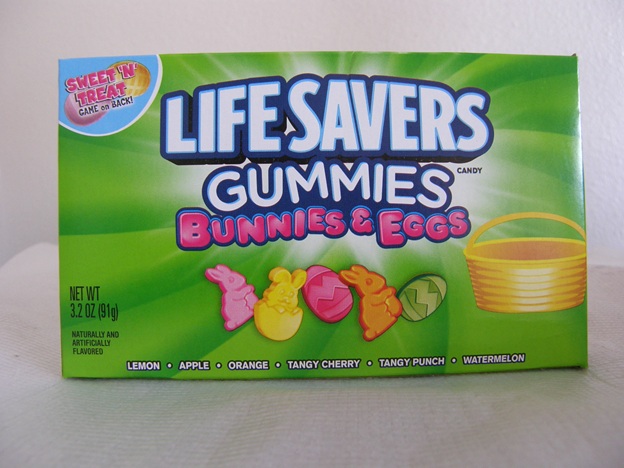 This is another artificially colored gelatin treat designed to make your child rather sick than happy. In addition to usual azo dyes and titanium dioxide your child is fed with unspecified amount (less than 2%) of motor oil called mineral oil, a suspected carcinogen. Is your child a kind of a robocop?
This is another artificially colored gelatin treat designed to make your child rather sick than happy. In addition to usual azo dyes and titanium dioxide your child is fed with unspecified amount (less than 2%) of motor oil called mineral oil, a suspected carcinogen. Is your child a kind of a robocop?
The Dye Diet Calculator shows unacceptably high health risk = 5.6 and essentially zero nutritional value = 0.15. Visit the calculator page for more information.
Safer alternatives are chocolates
Yes, chances are lower that you find artificial colorants in chocolate bunnies and eggs. But watch out: many of them may contain Polyglycerol Polyricinoleate (PGPR) presence of which means that you are looking at a ridiculous surrogate. Below are two a little better choices for you.
Chocolatey Covered Marshmallow Bunnies (Melster)
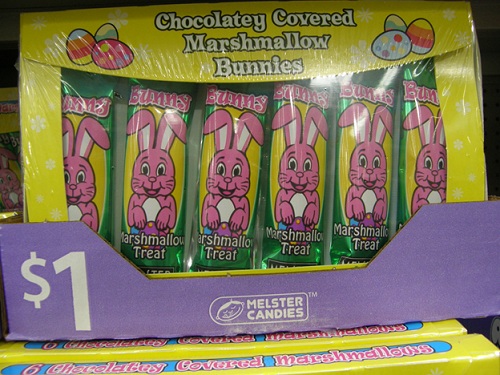 No artificial colors but artificial flavor and partially hydrogenated oil (means some trans fat) are present. The Dye Diet Calculator shows moderate health risk = 0.56 and moderate to good nutritional value = 1.8. You can eat this once in a while. Visit the calculator page for more information on the additives.
No artificial colors but artificial flavor and partially hydrogenated oil (means some trans fat) are present. The Dye Diet Calculator shows moderate health risk = 0.56 and moderate to good nutritional value = 1.8. You can eat this once in a while. Visit the calculator page for more information on the additives.
Hershey’s Milk Chocolate Covered Marshmallow Eggs
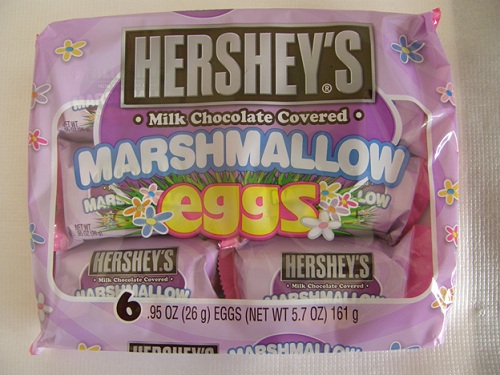 No artificial colors but artificial flavor and sulfur dioxide (means sulfites). Poor quality of chocolate too. The Dye Diet Calculator shows moderate health risk = 0.82 and moderate to good nutritional value = 1.2. As you note, this one is insignificantly riskier and poorer but you still can eat it once in a while. Visit the calculator page for more information on the additives. I have tried this coated egg and, let me tell you, I didn’t like it: lusciously sweet and too plain. Not recommended, especially for children. Maybe for laboratory animals? For conclusion: I don’t like marshmallow stuff – nothing healthy.
No artificial colors but artificial flavor and sulfur dioxide (means sulfites). Poor quality of chocolate too. The Dye Diet Calculator shows moderate health risk = 0.82 and moderate to good nutritional value = 1.2. As you note, this one is insignificantly riskier and poorer but you still can eat it once in a while. Visit the calculator page for more information on the additives. I have tried this coated egg and, let me tell you, I didn’t like it: lusciously sweet and too plain. Not recommended, especially for children. Maybe for laboratory animals? For conclusion: I don’t like marshmallow stuff – nothing healthy.
Bottom line. Surprisingly, detected artificial colors content has turned to be relatively low in comparison with findings in other products. (Check out these articles for more data). Good! But it’s worth keeping in mind that Recommended Daily Intake for Vitamin A is below 1 mg. The lower dye contents the safer are Easter eggs and bunnies. Chocolate covered marshmallows are safer than marshmallows and gumballs. But the best choices are real chocolates: look for whole body chocolate bunny monsters. Those, if eaten in moderation, will bring long happy hours of joy and love to your child. Also, ask for really delicious and healthy Ritter Sport Chocolate with Hazelnuts – you will not regret ever! Have a Happy and Healthy Easter, my friends!
Category: Candy, Food Dyes Exposure





